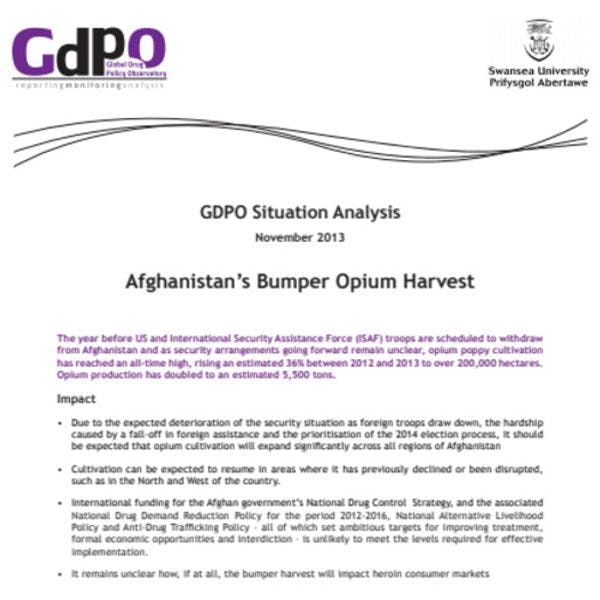Afghanistan’s bumper opium harvest
The year before US and International Security Assistance Force (ISAF) troops are scheduled to withdraw from Afghanistan and as security arrangements going forward remain unclear, opium poppy cultivation has reached an all-time high, rising an estimated 36% between 2012 and 2013 to over 200,000 hectares. Opium production has doubled to an estimated 5,500 tons.
The US led invasion of Afghanistan in 2001 was justified through reference to regime change and counter terrorism. Although former British Prime Minister Tony Blair cited Afghanistan’s role in the drug trade as a factor influencing his decision to support the invasion, there was no explicit strategy for narcotic drugs, despite opium’s complex, historical inter-relationship with conflict and development in the country. Further relegating consideration of the drug dimension down the list of priorities and objectives was the collapse of opium poppy cultivation in 2001 following an effective campaign decreed by Taliban leader Mullah Mohammed Omar and which was conducted with some collaboration with the UN drug control apparatus. While producing a range of negative consequences in terms of economic wellbeing of rural communities, this reduced the total area under opium poppy cultivation to below 8,000 hectares.
Keep up-to-date with drug policy developments by subscribing to the IDPC Monthly Alert.
Downloads
Regions
Related Profiles
- Global Drug Policy Observatory (GDPO)
